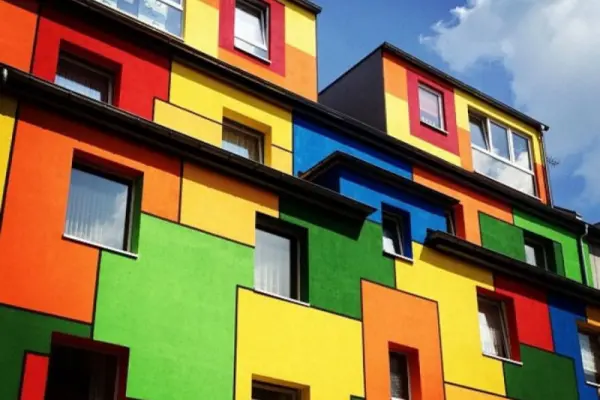First, it is important to understand that facade paints differ significantly from those used for interior work. They must have special properties to protect exterior walls from negative environmental impacts such as precipitation, temperature fluctuations, ultraviolet radiation, and other factors.
Incorrectly selected paint will quickly lose its original color, begin to crack, peel off, leading to the deterioration of the building's appearance and the need for premature repairs. To avoid this, it is very important to consider all the nuances when choosing a material. The main factors affecting the choice are:
- Type of surface to be painted (concrete, plaster, brick, wood)
- Climate conditions of the region
- Degree of environmental pollution (industrial areas, city center)
- Building height
- Required service life of the coating
Only by considering all these points can you choose the optimal facade paint composition. In the following sections, we will examine all the nuances in detail.
Paints for Mineral Surfaces (Concrete, Plaster, Brick)
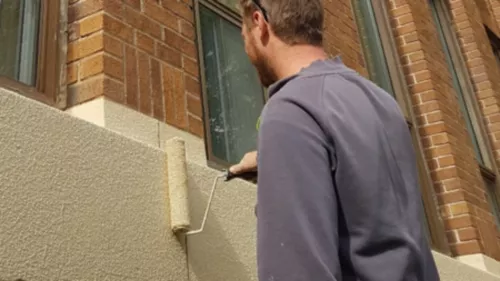
Some of the most popular and durable coatings for mineral substrates are silicate paints. Their binding component is liquid potassium glass (potassium silicate). When applied to concrete, cement plaster, silicate brick, a durable mineral film is formed, becoming one with the surface.
Advantages of silicate paints:
- High vapor permeability - the walls "breathe," but the coating does not let moisture in.
- Resistance to alkalis contained in mineral substrates.
- Resistance to atmospheric influences, ultraviolet, industrial pollution.
- Service life reaches 15-20 years with proper surface preparation.
Leading brands of silicate paints include Remmers (Amosil), Caparol (Sylitol), Tikkurila (Fasilit). For example, Remmers Amosil E paint has frost resistance down to -20°C and resistance to industrial emissions due to the addition of silicon dioxide.
If mineral surfaces are already painted, more elastic silicone or acrylic-silicate paints can be used. They adhere better to the remnants of old coatings and have slight expansion, compensating for wall shrinkage.
Types of paints and their characteristics
| Type of Paint | Vapor Permeability | UV Resistance | Service Life | Example Brands |
|---|---|---|---|---|
| Silicate | High | High | 15-20 years | Remmers, Caparol, Tikkurila |
| Silicone | High | High | 10-15 years | Sto, Scanmix, Ceresit |
| Acrylic | Medium | Medium | 8-10 years | Tikkurila, Marshall, Parade |
| Oil | Low | Medium | 7-10 years | Pinotex, Alpina |
| Alkyd | Low | Medium | 7-10 years | Marshall, Tikkurila |
For freshly plastered buildings, silicone facade paints such as Sto (Stopor Sil), Scanmix (Silcor), Marshal (Siliconharz), and similar are more suitable. They are simultaneously vapor permeable and water-repellent, have good adhesion, elasticity, and resistance to contamination.
If you have a limited budget, you can use high-quality acrylic or latex compositions such as Tikkurila Ultra Classic, Parade B1, Marshall Akrikor. They are also suitable for mineral substrates, but their service life usually does not exceed 8-10 years, and the coating is less durable.
In summary, for painting new concrete, plastered, or brick surfaces, it is best to choose silicate or silicone paints from well-known manufacturers, following the application technology. This will ensure the durability and protective properties of the coating.
Paints for Wooden Facades
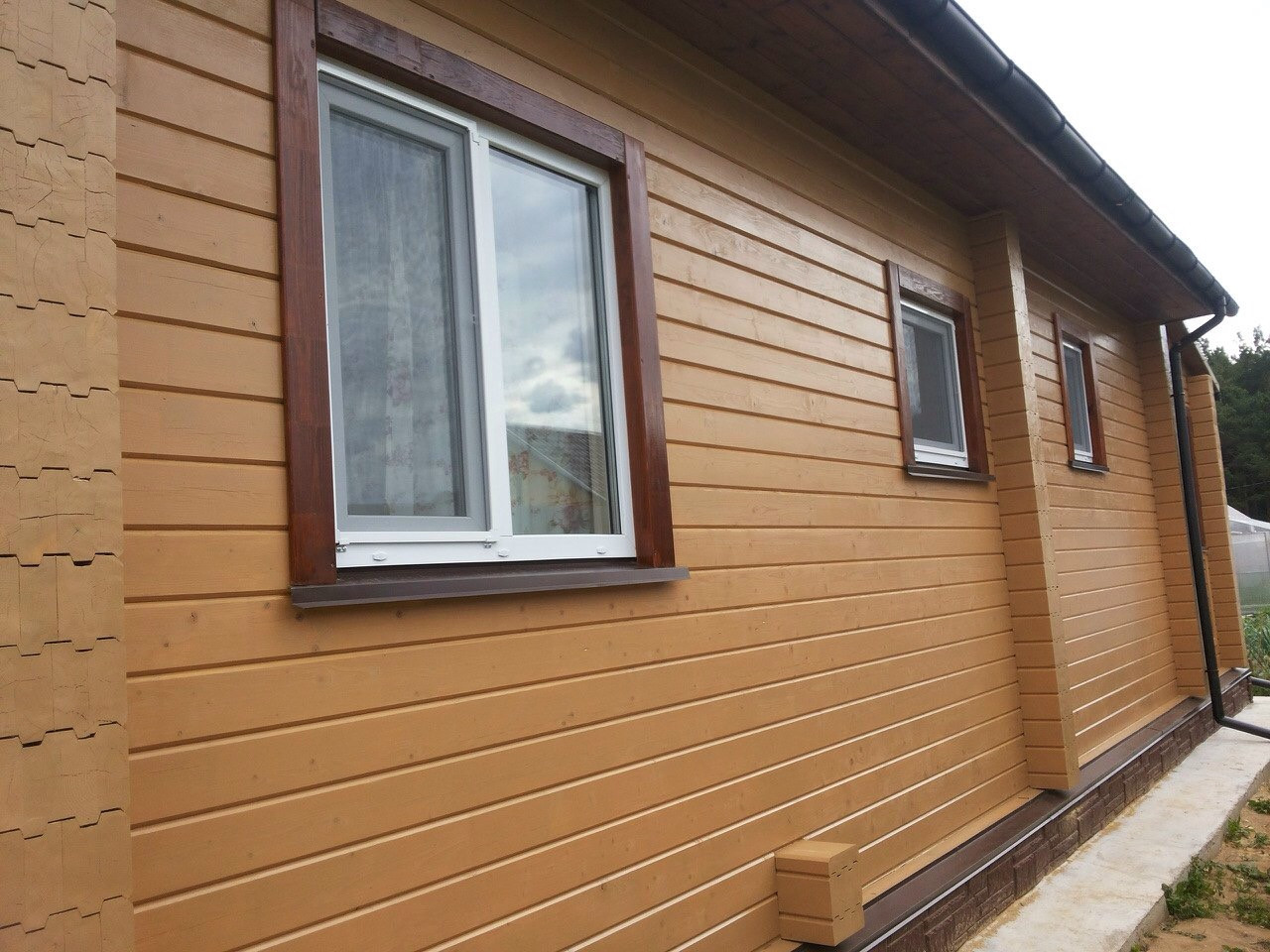
When painting wooden facades, the main requirements are:
- Good adhesion to wood
- Elasticity to compensate for wood shrinkage and expansion
- Resistance to atmospheric influences (precipitation, UV radiation)
- Vapor permeability for wood "breathing"
Some of the best options are oil and alkyd paints. They penetrate deeply into the wood pores, ensuring a strong bond. They contain natural oils (linseed, tung), alkyd resins, and pigments.
Popular brands:
- Pinotex Classic - alkyd paint from Finnish manufacturer Akzo Nobel
- Alpina Aqua Olvfarg - water-based oil paint from German company ARDEX
- Marshall OLVIO - Russian alkyd enamel with oil additives
Oil and alkyd compositions provide a matte or semi-matte finish that forms a noble patina over time and requires little maintenance. Renewal is required once every 7-10 years.
If the environmental factor is critical for you, water-based acrylic paints for wood are suitable. They do not contain solvents and are almost odorless, but have good adhesion, elasticity, and weather resistance.
Recommended acrylic paints:
- Tikkurila Valtti Aqua - Finnish paint for windows, doors, garden furniture
- Farbex Universal Aqua - Russian acrylic paint for wood
- Alpina Aqua Acryllack - German composition with UV protection
Before painting wooden surfaces, it is necessary to thoroughly sand all irregularities and traces of old paint, prime with an antiseptic composition to protect against mold and mildew. Application should be done in several layers according to the instructions.
Properly selected wood paint will not only decorate the facade but also reliably protect the wood from negative environmental factors for many years.
Next, let's talk about choosing paints depending on climate conditions.
Choosing Paint Based on Climate Conditions
The climate of the region where the building is located is one of the key factors when choosing suitable facade paint. Let's look at the features for different climate zones.
Climate conditions and recommended types of paints
| Climate Conditions | Recommended Types of Paints |
|---|---|
| Hot Climate | Silicone, Silicate (Remmers Amosil Optima, Caparol Thermosan, Sto Lotusan) |
| Cold Climate | Silicate, Silicone (Remmers Amosil Frost, Caparol Sylitol Bio Innenputz, Thomsit R766) |
| Humid Climate | Silicone (Ceresit Silikattop, Scanmix SilTex, Thunderbau Siliconharz) |
Hot Climate
In regions with hot sunny climates, facade paints must withstand strong heating and intense ultraviolet radiation. It is recommended to use light pastel tones that heat up less. Dark colors can lead to wall overheating and coating cracking.
Excellent choices are silicone or silicate paints with additives that ensure colorfastness: Remmers Amosil Optima, Caparol Thermosan, Sto Lotusan. They contain mineral lightfast pigments and UV filters.
Cold Climate
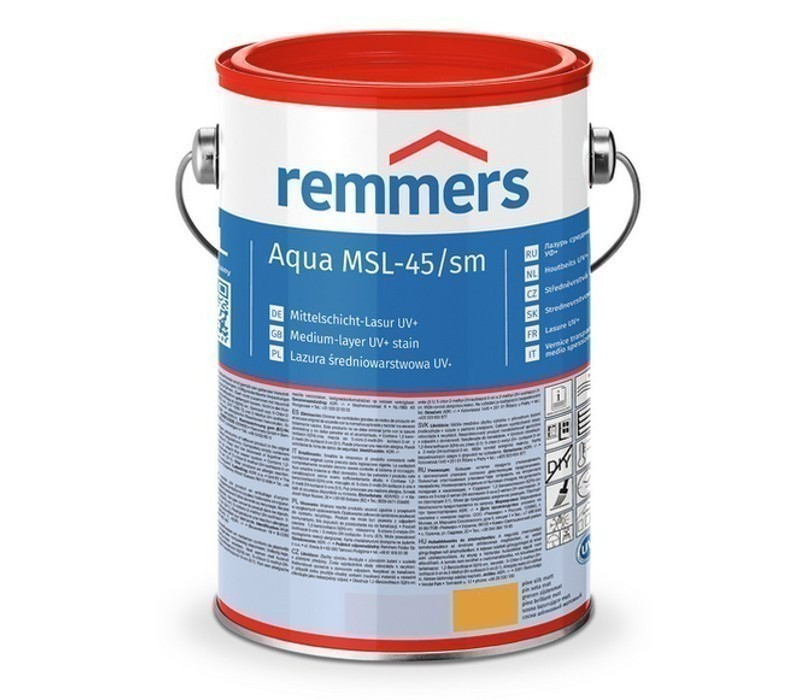
For northern regions with long cold winters, frost resistance of the paint is a priority requirement. The optimal solution is silicate compositions with high elasticity at low temperatures.
The most frost-resistant (up to -30°C) are paints from brands Remmers (Amosil Frost), Caparol (Sylitol Bio Innenputz), Thomsit (R766). Their film withstands multiple freeze/thaw cycles without cracking.
Humid Climate
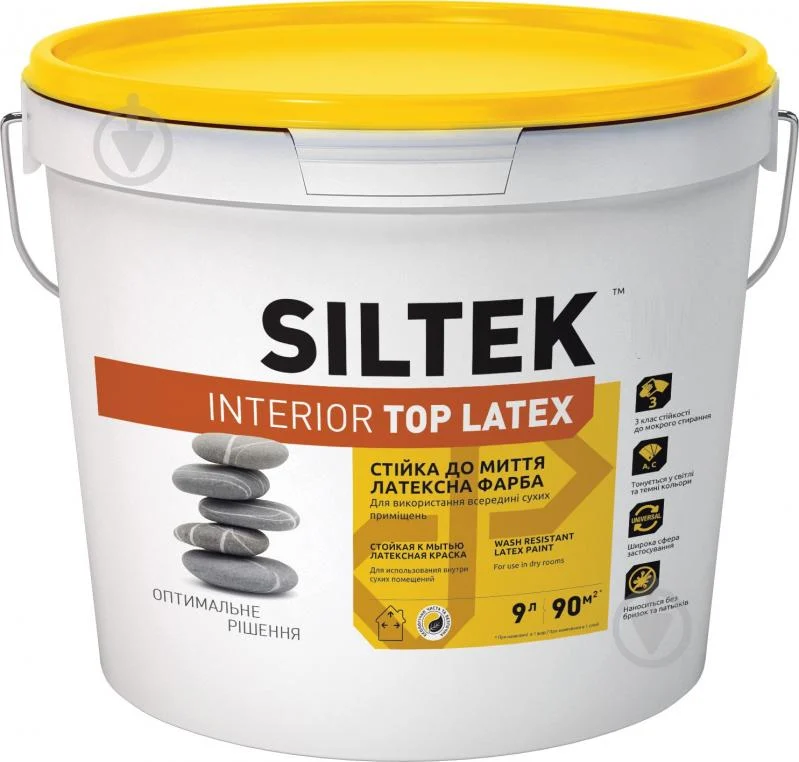
In regions with high humidity and frequent precipitation, it is necessary to choose paints with increased vapor permeability and water-repellent properties. This will prevent condensation buildup and mold and mildew growth inside the walls.
Good choices are silicone paints such as Ceresit (Silikattop, Silikon Fassadenputz), Scanmix (SilTex, Silicoat), Thunderbau (Siliconharz). They contain components that form a microporous water-repellent film on the surface.
Thus, depending on the predominant climate conditions in the region, it is necessary to choose compositions with relevant characteristics to ensure the durability and reliable protection of the building facade.
Considering Environmental Pollution Levels
Along with climate conditions, it is important to consider the level of air pollution in the area where the building is located. The following zones with different pollution levels are distinguished.
Pollution resistance and recommended paints
| Pollution Level | Recommended Types of Paints |
|---|---|
| Industrial Areas | Silicone (Caparol Amphibolin, Tikkurila Yki) |
| City Centers | Silicate, Acrylic (Remmers Amosil Oxo, Marshall Nevelok Bio, Tikkurila Ultra Matt) |
| Rural Areas | Acrylic, Latex (Tikkurila, Marshall, Parade) |
Industrial Areas
For painting facades of buildings located in close proximity to industrial enterprises, especially durable paints are needed that can withstand the impact of aggressive environments - dust, soot, gases, acids.
The optimal choice will be silicone paints with additives that increase resistance to chemical exposure. For example, Caparol Amphibolin is a special composition for areas with high levels of industrial emissions. Tikkurila Yki is a facade paint resistant to industrial pollution.
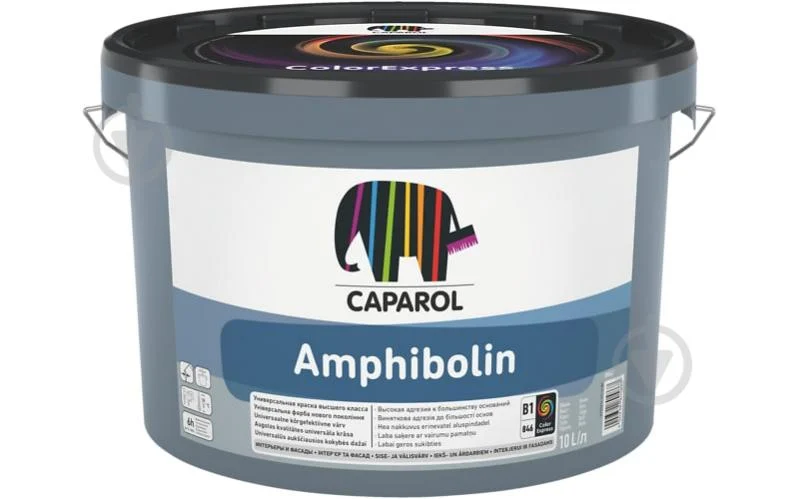
City Centers In urban conditions, facades are exposed to exhaust gases from vehicles, soot, and dust. Here, it is better to use silicate or acrylic paints with low water absorption and a smooth texture.
A smooth matte surface is less prone to particle deposition. Remmers Amosil Oxo, Marshall Nevelok Bio, and Tikkurila Ultra Matt paints contain additives for easy washing off contaminants with atmospheric precipitation.
Rural Areas
For rural areas and small settlements with low pollution levels, more budget-friendly types of facade paints - acrylic or latex without special additives - can be used.
However, it is not worth saving on quality, giving preference to proven manufacturers such as Tikkurila, Marshall, and Parade. Their compositions will provide the necessary resistance to fading and weathering.
Thus, the choice of facade paint should be made taking into account the level of air pollution in the specific region. The higher the level of industrial emissions and other harmful factors, the more specialized and durable the composition is required.
Choosing Based on Building Height
When painting high-rise buildings, special requirements are placed on facade paints. They must have increased elasticity to compensate for large deformations caused by shrinkage, wind loads, and temperature fluctuations.
For high-rise buildings (9-10 stories and above), highly elastic acrylic-silicone or silicone paints are the optimal solution. Their film can withstand stretching up to 20-25% without cracking.
Recommended elastic paints for high-rise buildings:
- Remmers Elastosil - acrylic-silicone with elasticity up to 400%
- Ceresit Ceramic Nanotech - silicate with the addition of ceramic spheres
- Tikkurila Yki Muuttuva - breathable elastic acrylic paint
- Marshal Akrilan Bio - super-elastic acrylic for facades
In addition to good elasticity, these compositions have high resistance to atmospheric influences, fungi, and mold. They are applied in several layers on a specially prepared surface.
For low-rise buildings up to 3-4 stories, conventional mid-range facade paints - acrylic, silicate - are quite suitable. However, for higher buildings, it is worth choosing specialized highly elastic compositions that will last longer without cracking.
High-rise buildings and recommended paints
| Building Height | Recommended Types of Paints |
|---|---|
| Low-rise buildings (up to 3-4 stories) | Acrylic, Silicate (Tikkurila, Marshall, Parade) |
| High-rise buildings (9-10 stories and above) | Highly elastic acrylic-silicone, Silicone (Remmers Elastosil, Ceresit Ceramic Nanotech, Tikkurila Yki Muuttuva, Marshal Akrilan Bio) |
Architectural monuments and historical buildings require a special approach. For their restoration, restoration paint lines that are as close as possible in composition to the original are used. For example, RemmersRepal Historie, Caparol Sylitol NQG, Tikkurila Membraan.
How to Prepare the Facade for Painting?
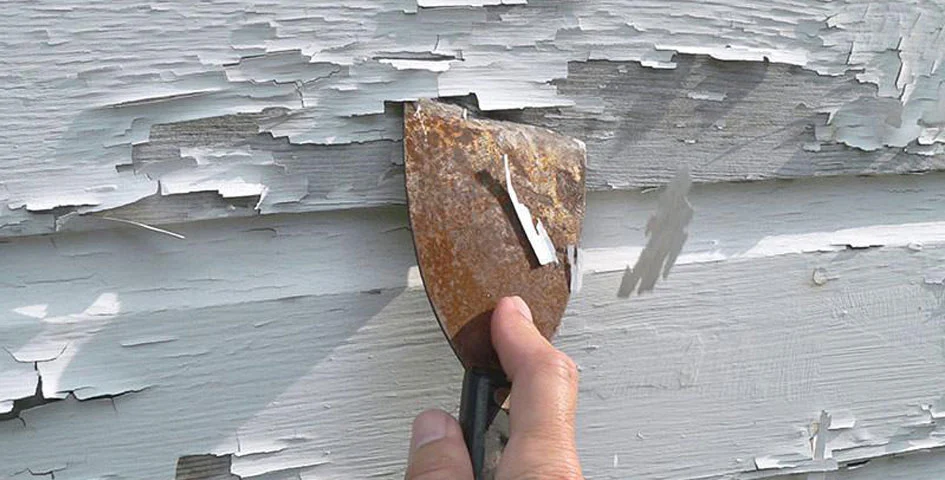
Proper surface preparation is crucial for the durability and quality of the coating. The following sequence of actions is recommended:
- Thoroughly clean the facade from dirt, peeling old paint, efflorescence, mold, and mildew. Special cleaning and antiseptic compounds are used for this.
- Restore and level the surface by filling cracks, chips, and holes. Cement and polymer putties are used for mineral substrates.
- Treat wooden surfaces with antiseptics to protect against decay and wood-boring insects.
- Apply a primer to improve paint adhesion. Primers can be strengthening, adhesive, or moisture insulating. The choice depends on the type of substrate.
- Final leveling of minor defects using sanding or puttying.
Only a fully prepared smooth surface guarantees strong paint adhesion and coating durability.
Practical Tips for Applying Paint
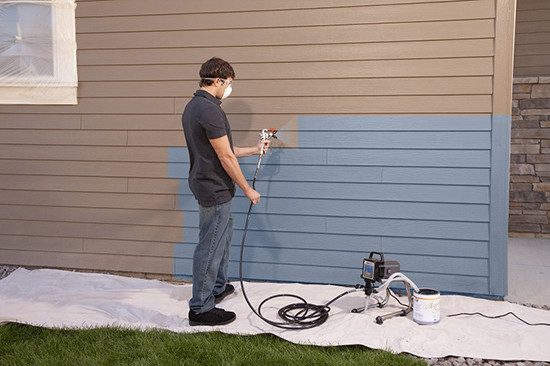
- Work should be carried out at an air and substrate temperature of +5 to +25°C and relative humidity of no more than 80%. Exclude hot sun.
- For large areas, it is convenient to use an airless sprayer; for complex-shaped elements, use a roller or brush.
- Thoroughly mix the paint until uniform consistency, and dilute if necessary according to the instructions.
- Apply in 2-3 layers with intermediate drying. Each subsequent layer perpendicular to the previous one.
- After drying, be sure to check the surface for defects - misses, drips, bubbles. Correct deficiencies and treat problem areas.
- Strictly follow the consumption and drying time specified in the technical documentation for the specific paint.
Preventive Maintenance of Painted Facades
To maintain the proper appearance and protective properties of the facade coating, regular maintenance is required:
- Annual inspection of the coating condition, including hard-to-reach areas, identifying possible defects.
- Removing dirt, mold, and efflorescence using soft brushes, sponges, and special cleaning solutions.
- Prompt restoration of peeling, cracking areas, and chips by cleaning and filling with a new layer of paint.
- Treating damaged areas with special repair and protective compounds.
- Dark colors may require refreshing painting more often than light colors.
- Complete repainting of the entire facade by specialists after the service life of the coating (7-15 years).
Timely maintenance will ensure the long-term preservation of the painted facade and prevent the need for costly major repairs.
Conclusion
In conclusion, the correct choice of facade paint is the key to a durable and beautiful coating for the exterior walls of the building. It is necessary to consider a whole range of factors:
- Type of surface to be painted (mineral or wooden)
- Climate conditions of the region (heat, cold, humidity)
- Level of industrial emissions and air pollution
- Height of the building
- Required service life of the coating and preferred decorative effects
Only by considering all these nuances can you competently choose the optimal paint composition from the assortment of proven manufacturers - Remmers, Caparol, Tikkurila, Ceresit, Marshall, and other market leaders.
Before starting work, thorough surface preparation is extremely important - cleaning, leveling, priming. This directly affects the adhesion and durability of the paint. Application should be carried out strictly according to the manufacturer's instructions at the recommended time and weather conditions.
After the coating dries, it is advisable to regularly inspect it and promptly restore damaged areas. Careful maintenance and prevention will extend the service life of the painted facade.
By following all these recommendations and involving experienced craftsmen, you will be able to create a truly high-quality, durable, and aesthetically attractive coating for your building facade. Good luck with your renovation!
